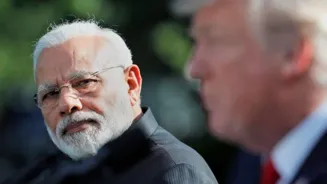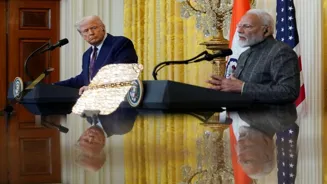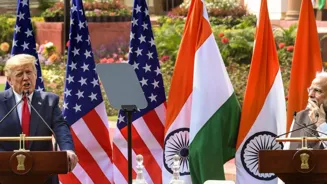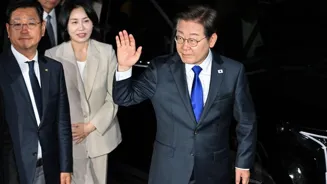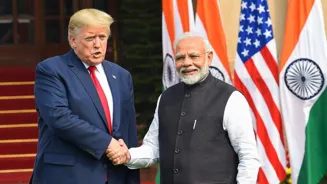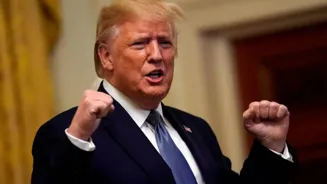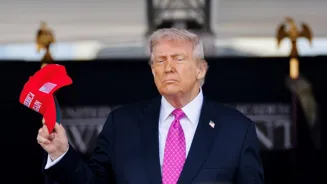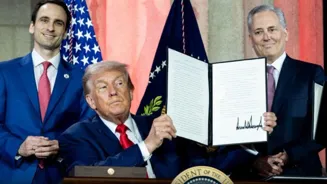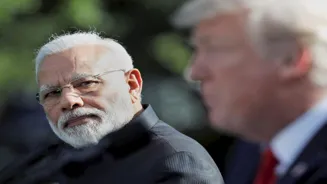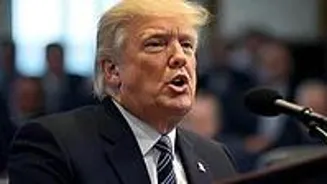India stands at a momentous crossroads in its economic journey. Unlike China, it may not enjoy the tailwinds that turned growth into more growth, having now landed in the tariff crosshairs of an insecure
America. Yet, over the past three decades, it has left an undeniable mark on the global economy—built on the blood, sweat, and determination of its people.
Every percentage point of GDP growth has been hard-earned and well-deserved. The imperialist tendencies of superpowers are nothing new to India. The long shadow of the British Raj etched that lesson deep into its national DNA. India not only knows how to resist such pressures but how to transform crises into opportunities.
For India, a crisis is not a stumbling block but an opportunity with ample possibilities. From the watershed reforms of 1991 to the tremors of the 2008 global financial crisis, every disruption has been a trigger for transformation. Now, in 2025, with the United States imposing steep tariffs as high as 50 per cent on Indian exports, the country finds itself at another crossroads. If history is any indication, this moment will not mark decline but renewal.
1991: From Near Collapse to Economic Reinvention
In 1991, India’s economy was on the brink. Foreign reserves could barely cover a few weeks of imports, inflation was surging, and the government resorted to pledging 67 tons of gold to avert default. The response was not retreat but reform. The dismantling of the License Raj, liberalisation of trade, privatisation of inefficient state enterprises, and opening the economy to global markets became the bedrock of modern India’s growth. What began as an emergency rescue evolved into a generational shift in economic policy.
2008: Building Buffers in Global Turbulence
The global financial crisis of 2008 sent shockwaves across the world, but India avoided the worst by leaning into stimulus measures, investing heavily in infrastructure, and diversifying its trade relationships. By reducing dependence on any single market and sustaining domestic demand, India learned that resilience comes from balance and diversification.
2025: The Tariff Shock and the Strategic Response
President Trump has raised tariffs on Indian imports to 50 per cent, citing a failure to land a favourable deal for Trump, and India’s continued purchase of Russian oil. The move has affected trade negotiations between the two nations and drawn sharp criticism from New Delhi, which called the decision unfair and unjustified. The Indian economy is now bracing for impact.
Exporters rushed shipments to beat the August 27 deadline. Moody’s warned that higher tariffs could shave 0.3 percentage points off India’s GDP growth. The rupee suffered its longest losing streak in months, prompting Reserve Bank intervention, while defence procurement plans involving US aircraft and arms were put on hold.
India’s Strategic Pivot: Turning Pressure into Progress
The government’s response has been swift and multi-layered. While it continues backroom talks, it has signalled that reforms that had been pending for years will now be accelerated to strengthen domestic competitiveness. Prime Minister Modi has made it clear that India will not compromise on the interests of farmers, dairy producers, and fishermen, even if it means paying an economic price.
Exporters are already expanding outreach to Europe, Africa, the Middle East, and ASEAN to reduce over-reliance on the United States. Behind the scenes, quiet diplomatic efforts continue, with India signaling openness to revisit tariffs on select US agricultural imports in exchange for easing American duties on Indian goods.
The Pattern That Works: Crisis to Reform to Growth
The story is familiar. In 1991, collapse led to structural reforms. In 2008, global turmoil triggered domestic expansion and diversification. In 2025, the tariff shock is catalysing deeper reforms, wider market access, and strategic resilience. With over 650 billion dollars in foreign exchange reserves, an expanding infrastructure network, and a young, skilled workforce, India is positioned to turn today’s pressure into tomorrow’s progress.
Ready for the Next Chapter
The Trump-era tariffs may have been designed as a blow, but they are more likely to become a spark. India’s history shows that adversity is often the beginning of its next success story. In the shifting global trade environment, the country has a chance to emerge as one of the most trusted, competitive, and agile economies. If the past three decades are any guide, India will not just adapt—it will rise.
